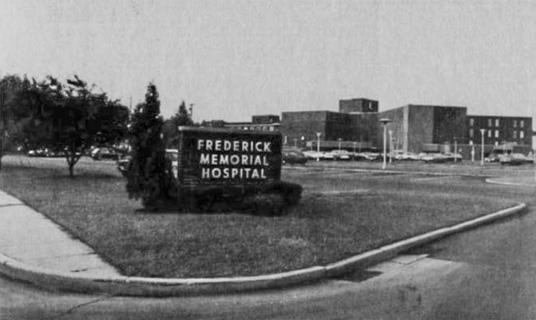Editor's note: This is part of the Poster series about the history of NCI at Frederick and Frederick National Laboratory.
Though it lasted just 15 years, Frederick’s first clinical oncology program answered multiple fundamental questions in the fledgling field of immunotherapy and primed the local medical community to become the oncology research hub it is today. The Biological Response Modifiers Program (BRMP) received formal recognition from the Department of Health and Human Services 40 years ago today, on April 27.
The program was developed as a partnership between Frederick Cancer Research Center (forerunner to the Frederick National Laboratory and the National Cancer Institute at Frederick), the National Cancer Institute, and Frederick Memorial Hospital (present-day Frederick Health Hospital).
The BRMP combined laboratory studies and Phase I and II clinical trials of interferons, antibodies, immune system compounds, and other biological molecules. The goal was to evaluate these compounds against cancer, administer them to patients for treatment, and—hopefully—identify or develop promising ones.
“And when evidence of particular promise is discovered, the program’s team will be able to respond quickly and begin careful testing and evaluation,” said Richard Schweiker, then-secretary of the Department of Health and Human Services, in his announcement on April 27, 1981, acknowledging the BRMP’s creation.
Schweiker recognized the BRMP’s potential, and his announcement gave the program the full blessing from his department. The National Cancer Institute had already embraced the idea for the BRMP and begun to set the stage two years earlier. The program’s inaugural director, Robert Oldham, M.D., and several staff were on board and its first trials were underway at the time of Schweiker’s announcement.
The staff set up studies and built out facilities. Within a year, they had launched a flagship trial of interferon alpha, established a special clinic at Frederick Memorial Hospital, and added more gifted scientists to the BRMP’s growing ranks.
These were among the first major undertakings in the BRMP’s 15-year existence, and like many of the program’s activities, they still resonate. The immunological information learned through the program paved the way for later advances in immunotherapy, including current ones that can trace their roots back to the foundational discoveries made in the BRMP. The program also equipped and trained part of a generation of scientists: some of the BRMP’s scientists and staff stayed in Frederick and became prominent members of their fields, while others moved on and launched long and successful careers in oncology and immunology elsewhere.
The National Cancer Institute shuttered the BRMP and began moving its clinical elements to Bethesda, Maryland, in 1995 upon recommendations from a special advisory committee. The goal was to consolidate the institute’s clinical efforts into one location on the main National Institutes of Health campus.
Though the closure marked the end of clinical research at the scientific facility in Frederick, the BRMP’s legacy continues. It thrives in its former staff—familiar faces around the facility and respected scientific voices around the nation—and in ongoing immunological and immunotherapeutic discoveries. It continues to echo from the past.
Samuel Lopez is a technical editor in Scientific Publications, Graphics & Media (SPGM), where he writes for NCI at Frederick and Frederick National Laboratory’s news outlets; manages the day-to-day operations of the Poster newsletter; informally serves as an institutional historian; and edits scientific manuscripts, corporate documentation, and a slew of other written media. SPGM is the facilities’ creative services department and hub for editing, illustration, graphic design, formatting, and multimedia training and support.


